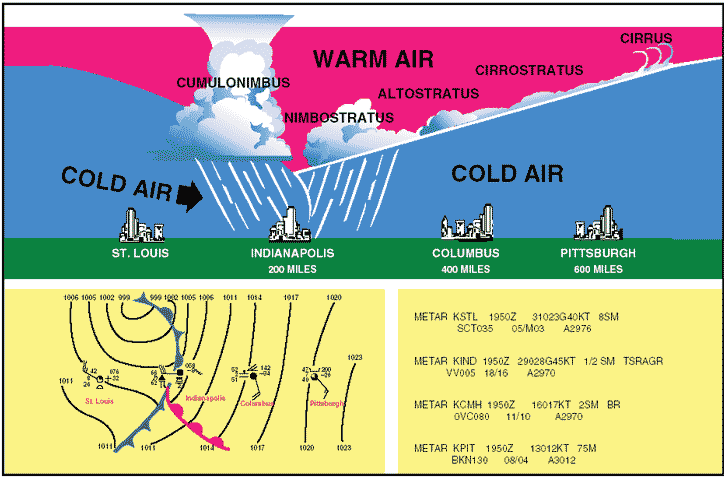

A thickening and lowering of these high clouds into middle-stage altostratus or altocumulus is a good sign the warm front or low has moved closer and precipitation may begin within less than six hours. When these high clouds progressively invade the sky and the barometric pressure begins to fall, precipitation associated with the disturbance is likely about 6 to 8 hours away. However, if cirrocumulus also appears, there is greater airmass instability approaching ahead of the front. The first clouds that indicate an approaching warm front tend to be mostly high cirrus at first, changing to cirrostratus as the front approaches.

As it cools, any water vapor that is present will condense and form extensive cloud cover. The boundary between the two air masses has a gradual slope of 1:200 and lifting is slow but persistent.Īs the air mass rises into regions of lower pressure, it expands and cools. Being light, the warm air mass is unable to displace the cooler air mass and instead is forced upward along the upper boundary of the colder air in a process known as overrunning. Because of a warm air mass’s higher temperature and thus lesser density, mixing between the two air masses is unlikely. The warm air mass behind a warm front is not only warmer, but often (but not always) also higher in humidity than the colder air preceding it.

Development ĭifferent air masses that affect North America, as well as other continents, tend to be separated by frontal boundaries.Īir masses are large bodies of air with similar properties of temperature and humidity that form over source regions. On weather maps, the surface location of a warm front is marked with a red line of semicircles pointing in the direction of travel. If the warm air mass is unstable, thunderstorms may be embedded among the stratiform clouds ahead of the front, and after frontal passage thundershowers may continue. Clearing and warming is usually rapid after frontal passage. Fog can also occur preceding a warm frontal passage. This also forces temperature differences across warm fronts to be broader in scale.Ĭlouds ahead of the warm front are mostly stratiform, and rainfall defiantly increases as the front approaches. Warm fronts lie within broader troughs of low pressure than cold fronts, and move more slowly than the cold fronts which usually follow because cold air is denser and less easy to remove from the Earth's surface. As a result of its increased altitude, it cools off and its moisture condenses, forming clouds and possibly precipitation.Ī warm front is a density discontinuity located at the leading edge of a homogeneous warm air mass, and is typically located on the equator-facing edge of an isotherm gradient. The warmer air, due to lower density, rises over the colder air as it moves. The warm air behind the front is slowly overtaking the cold air ahead of the front, which is moving more slowly in the same direction.


 0 kommentar(er)
0 kommentar(er)
